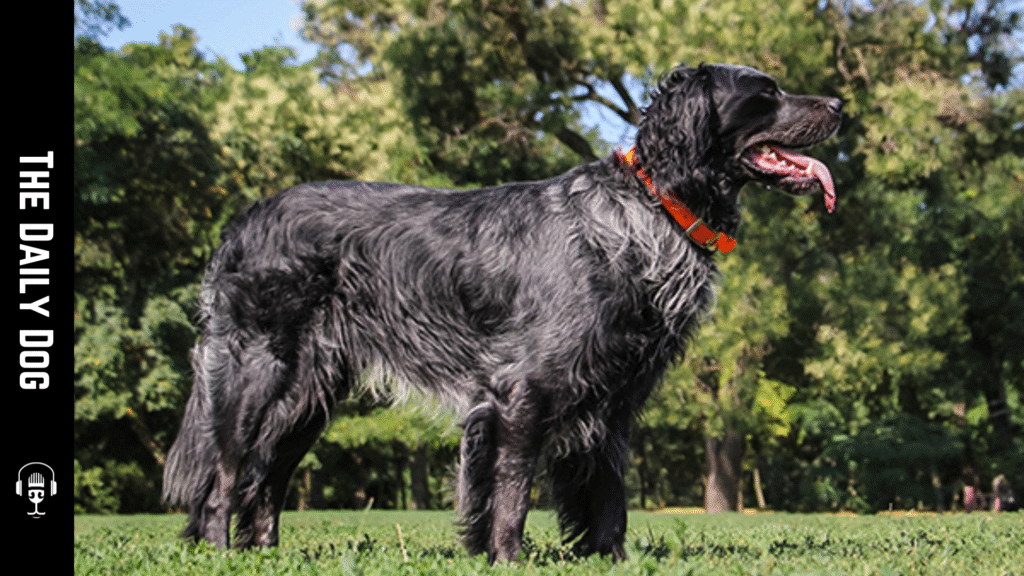The Blue Picardy Spaniel, a rare and elegant breed, combines the grace of a sporting dog with the loyalty of a family companion. Known for its striking blue-grey coat and gentle demeanor, this breed has won hearts in Europe and is gradually gaining recognition worldwide. Whether you’re a hunter, an active pet owner, or a dog enthusiast, understanding this breed’s unique traits can help you decide if it fits your lifestyle.
Origins and Historical Background
The Blue Picardy Spaniel traces its roots to the Picardy region of northern France. Developed in the late 19th and early 20th centuries, this breed emerged from crosses between local spaniels and English Setters or Gordon Setters brought by British hunters. The goal was to create a versatile gundog capable of working in France’s marshy landscapes and dense forests.
By the 1930s, the breed was officially recognized by the French Kennel Club, though its population dwindled during World War II. The Blue Picardy Spaniel survived and symbolized French hunting heritage thanks to dedicated breeders. Today, it’s prized for its adaptability, intelligence, and calm temperament in the field and at home.
Physical Characteristics: A Blend of Beauty and Function
The Blue Picardy Spaniel is a medium-sized dog, standing 22–24 inches tall and weighing 45–55 pounds. Its most distinctive feature is its dense, wavy coat, which ranges from slate blue to grey with occasional chestnut markings. The fur is water-resistant, a trait inherited from its spaniel ancestors, making it ideal for retrieving game in wet environments.
Other notable features include:
- Eyes: Almond-shaped, amber or hazel, exuding a gentle, intelligent expression.
- Ears: Long, feathered, and set low on the head.
- Tail: Typically docked in hunting lines but left natural in companion dogs.
Their lean, muscular build allows for agility and endurance, while their webbed feet make them strong swimmers.
Temperament: The Ideal Family and Hunting Companion
Blue Picardy Spaniels are known for their even-tempered, affectionate nature. They form strong bonds with families and thrive in homes where they’re included in daily activities. Key personality traits include:
- Gentle and Patient: Their calm demeanor makes them excellent with children and pets.
- Intelligent and Trainable: They respond well to positive reinforcement and are eager to please. Early socialization is key to nurturing their confidence.
- Moderate Energy Levels: While active outdoors, they’re content to relax indoors—a balance that suits hunters and casual owners.
However, their strong hunting instincts mean they may chase small animals. Secure fencing and leash discipline are essential.
Exercise and Activity Requirements
The Blue Picardy Spaniel needs regular physical and mental stimulation as a working breed. Aim for:
- 60–90 minutes of daily exercise, including walks, jogs, or play sessions.
- Interactive games like fetch, agility courses, or scent work engage their sharp minds.
- Swimming opportunities, which they naturally excel at and enjoy.
Without adequate activity, they may develop destructive habits like chewing or digging.
Grooming and Maintenance
Their lush coat requires moderate upkeep:
- Brushing: 2–3 times weekly to prevent mats and remove debris. Pay attention to feathering on the ears, legs, and tail.
- Bathing: Every 6–8 weeks or after muddy outings. Use a mild shampoo to preserve natural oils.
- Ear Care: Clean weekly to prevent infections, a common issue in floppy-eared breeds.
- Nail Trimming: Monthly to avoid overgrowth.
Seasonal shedding occurs, so brushing is increased during spring and fall.
Health and Lifespan
Blue Picardy Spaniels are generally healthy, with a lifespan of 12–14 years. Responsible breeders screen for:
- Hip Dysplasia: A joint condition common in medium-sized breeds.
- Ear Infections: Due to their long, floppy ears.
- Eye Issues: Progressive retinal atrophy (PRA) and cataracts.
Routine vet checkups, a balanced diet, and a healthy weight can mitigate risks.
Training Tips for Success
- Start Early: Begin obedience training at 8–10 weeks old.
- Use Rewards: Treats, praise, and playtime motivate this sensitive breed.
- Focus on Recall: Reinforce commands like “come” to manage their hunting instincts.
- Avoid Harsh Methods: They thrive on patience and consistency.
Advanced training for hunting or dog sports can channel their energy productively.
Is the Blue Picardy Spaniel Right for You?
This breed suits:
- Active families or individuals who enjoy outdoor adventures.
- Experienced dog owners are comfortable with training and grooming.
- Homes with space for exercise, though they adapt well to apartment living if exercised adequately.
They’re less ideal for highly sedentary households or those unable to commit time to their needs.
Finding a Reputable Breeder
Due to their rarity, finding a Blue Picardy Spaniel requires research:
- Contact kennel clubs like the Club Français de l’Épagneul Bleu de Picardie for breeder referrals.
- Expect to pay $1,500–USD 3,000, depending on lineage and location.
- Ask for health clearances and meet the puppy’s parents to assess temperament.
Adoption through breed-specific rescues is rare but worth exploring.
A Hidden Gem Among Spaniels
The Blue Picardy Spaniel offers a unique mix of beauty, brains, and versatility. Whether flushing game in the field or cuddling on the couch, this breed brings quiet charm and loyalty to any home. While not as well-known as other spaniels, its growing popularity is a testament to its adaptability and heart. For those willing to meet its needs, the Blue Picardy Spaniel is a rewarding companion that stands out in both looks and personality.
By focusing on their history, care requirements, and unique traits, this guide provides actionable insights for potential owners. With proper attention to exercise, training, and health, this rare breed can thrive as a beloved family member for years to come.
We offer a FREE Strategy Call.
Click on the graphic to learn more
Read More










